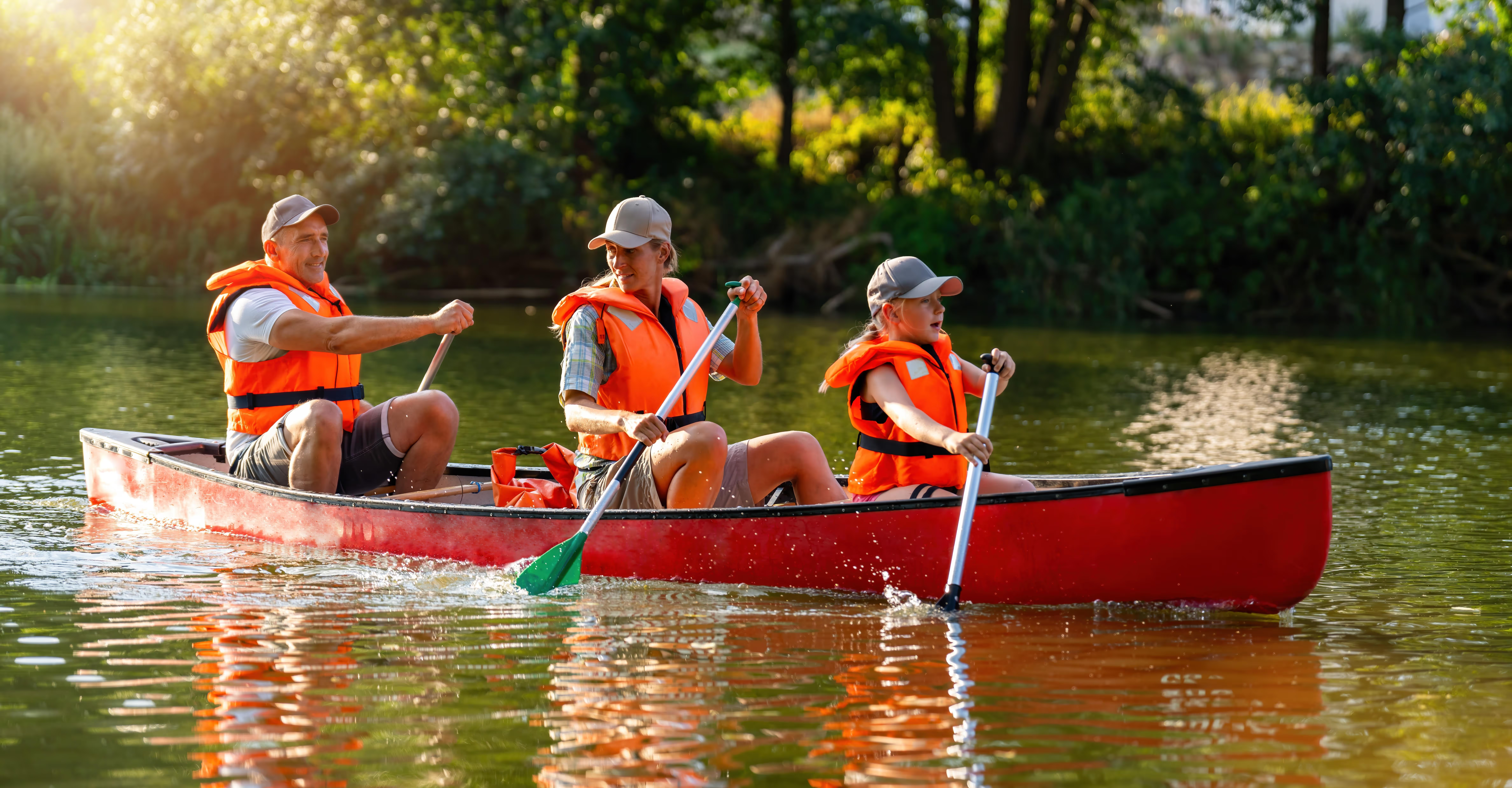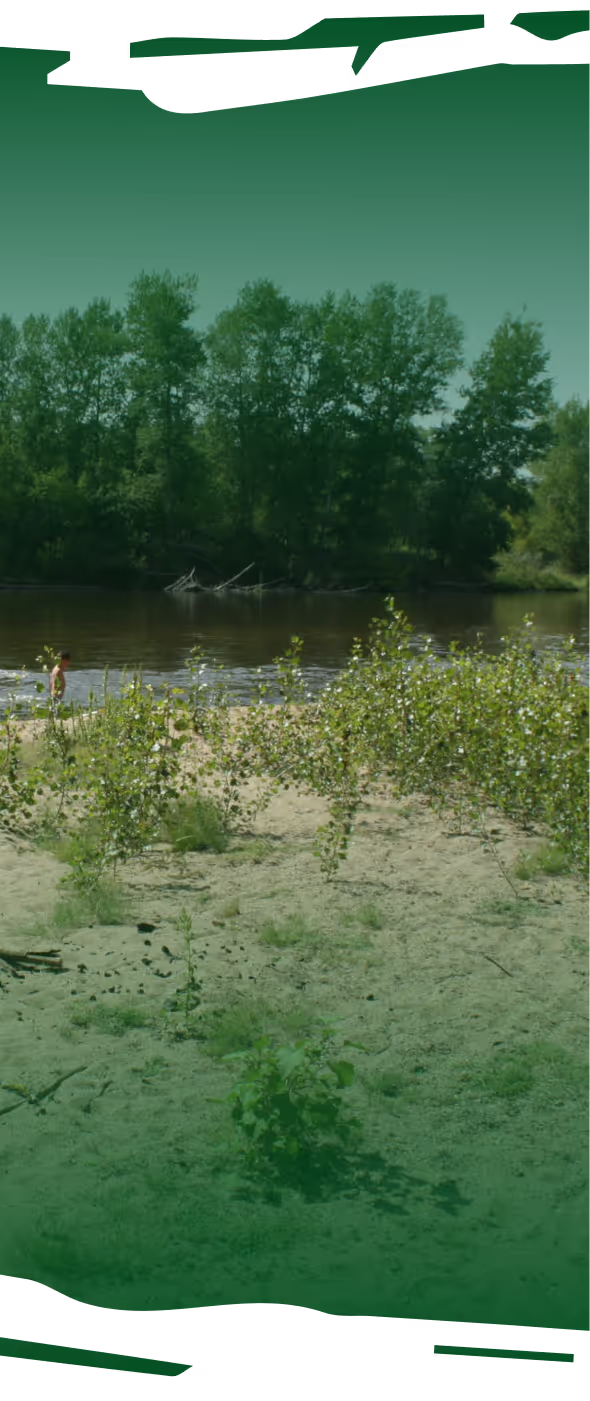How to paddle a canoe properly? Expert tips
Paddling well in a canoe relies on a simple technique: trunk rotation, keeping the paddle vertical in the water, and a smooth forward and backward motion. The key to success? An upright posture, proper paddle grip, and a consistent rhythm that favors efficiency over force. Whether you're out for a casual ride or planning to canoe descent on the Loire, mastering paddling will transform your experience—less fatigue, more enjoyment, and better control of your boat.
Basic paddling techniques
Correct paddle grip
Hand positioning:
- Top hand: on the grip (handle)
- Bottom hand: mid-shaft
- Spacing: shoulder width
Simple test: Raise paddle above your head. Your arms should form right angles.
Paddling stroke breakdown
1. Catch phase
- Blade enters water near your feet
- Paddle vertical (not tilted)
- Look toward destination
2. Power phase
- Torso rotation (not just arms)
- Pull water backward
- Keep paddle close to canoe
3. Exit phase
- Remove blade at hip level
- No further (efficiency loss)
- Clean movement
4. Recovery phase
- Bring paddle forward
- Blade parallel to water (less resistance)
- Prepare next catch
J-stroke technique
To go straight without switching sides:
- Normal paddling to hips
- Turn blade outward
- Push water slightly
- Forms J in water
This technique avoids constant side switching. Before even paddling, it's essential to know how to get into a canoe kayak safely to avoid tipping over right from the start.
Importance of proper posture
Optimal seated position
Torso and back:
- Straight back but not rigid
- Relaxed shoulders and low
- Free torso rotation
Legs and feet:
- Feet flat on bottom
- Knees slightly bent
- Stable support without tension
Kneeling position (advanced)
Setup:
- Knees spread on foam pads
- Buttocks against thwart
- Upright torso and mobile
Advantages:
- More power
- Better control
- Authentic sensations
Wearing the right clothing for canoe kayak is key to staying comfortable, dry, and safe in all weather conditions.
Why posture matters?
Efficiency:
- Torso rotation generates more power than arms alone
- Correct alignment prevents injuries
- Optimal balance improves control
Comfort:
- Less muscle fatigue
- Prevention of back pain
- Extended endurance
5 common mistakes to avoid
❌ Mistake 1: Paddling only with arms
- Problem: Quick fatigue, little power
- Solution: Torso rotation, extended arms
❌ Mistake 2: Paddle too angled
- Problem: Reduced efficiency, unstable direction
- Solution: Vertical paddle in water
❌ Mistake 3: Strokes too long
- Problem: Unnecessary effort, loss of control
- Solution: Exit blade at hip level
❌ Mistake 4: Looking at paddle
- Problem: Loss of balance and direction
- Solution: Look toward destination
❌ Mistake 5: Irregular rhythm
- Problem: Jerky progression, fatigue
- Solution: Regular and fluid cadence
Le choix des pagaies pour canoë joue un rôle crucial dans votre confort de navigation, votre efficacité de propulsion et le plaisir sur l’eau.
Tips to improve efficiency
Optimize your movements
Fundamental principle: Paddle stays fixed in water, canoe moves forward.
Breathing technique:
- Inhale during recovery phase
- Exhale during power phase
- Natural rhythm without forcing
Develop endurance:
- Start slowly first minutes
- Gradually increase intensity
- Maintain sustainable pace
Steer effectively
Change direction:
- Paddle more on side you want to go
- C-stroke technique: blade describes C in water
- Rudder stroke: paddle used as rudder
Paddling together:
- Back person steers and sets rhythm
- Alternate sides to stay straight
- Constant communication
Handle difficult conditions
Against headwind:
- Higher cadence
- Shorter and more frequent strokes
- Stay close to protected shores
In current:
- Adapted navigation angle
- Anticipate obstacles
- Quick corrective strokes
Appropriate equipment selection
Choosing the right canoe paddles plays a crucial role in your paddling comfort, propulsion efficiency, and overall enjoyment on the water.
Choose your paddle
Length:
- Standing, should reach between chin and nose
- Too long: shoulder fatigue
- Too short: reduced efficiency
Blade shape:
- Wide: more power, more fatigue
- Narrow: less power, more endurance
- Asymmetric: better performance
Material:
- Aluminum/plastic: durable, economical
- Carbon fiber: light, high-performance, expensive
- Wood: traditional, aesthetic
Complementary equipment
Paddling gloves:
- Prevent blisters
- Better grip in cold weather
- Optional for short outings
Knee pads:
- Kneeling position comfort
- Cold insulation
- Increased stability

Frequently asked questions — Canoe Kayak Loire
2-3 outings for basics, one season for complete mastery. Depends on practice frequency and supervised learning.
Yes to avoid muscle imbalances and fatigue. Alternate every 6-8 strokes or master J-stroke to paddle longer on same side.
Check your posture (often the problem), correct paddling technique and use J-stroke or corrective strokes. Guide can quickly identify the issue.
Good technique is silent. If it splashes or makes noise, attack angle or exit are incorrect. Efficient paddling is fluid and discreet.




